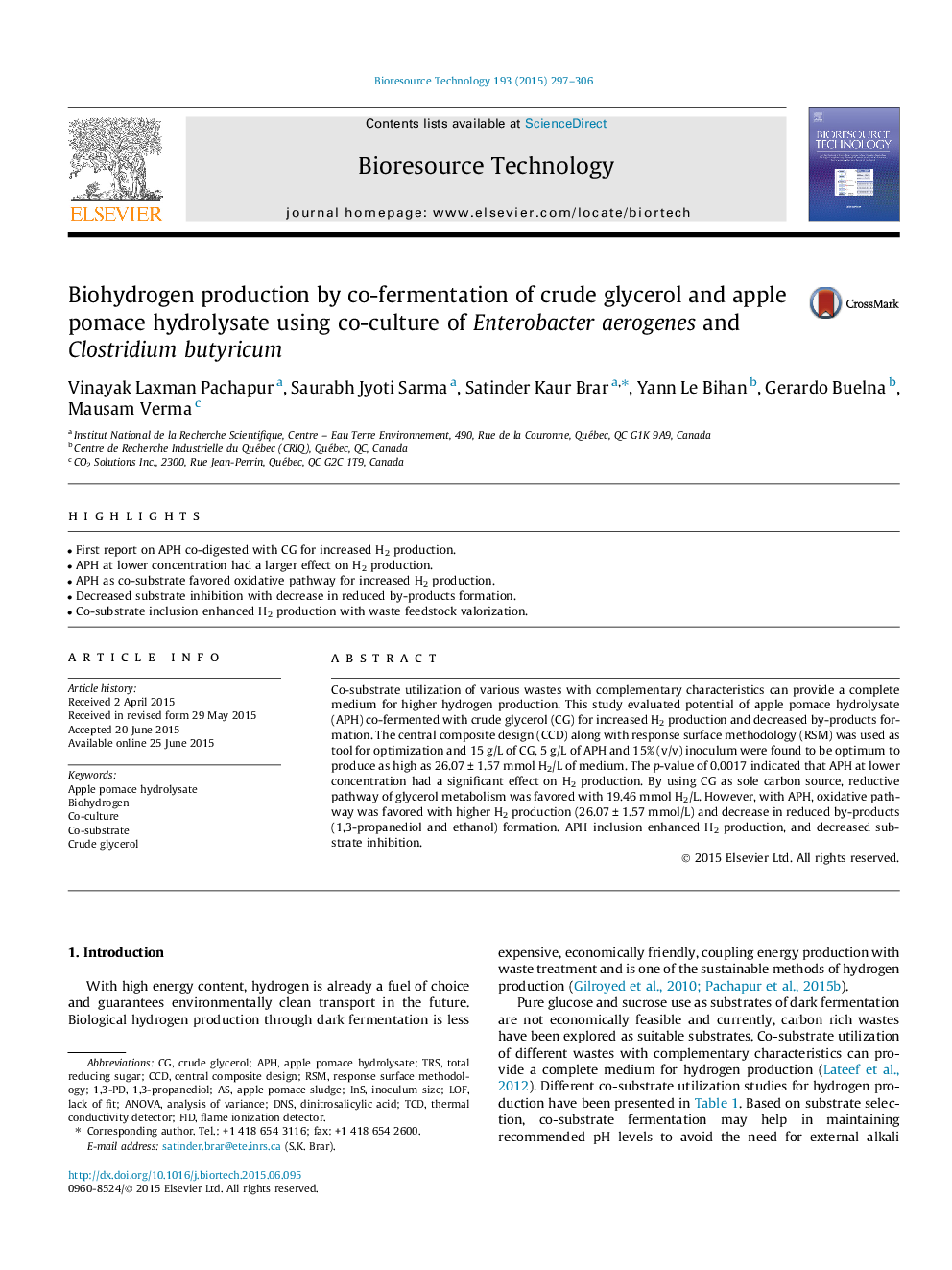| Article ID | Journal | Published Year | Pages | File Type |
|---|---|---|---|---|
| 7074203 | Bioresource Technology | 2015 | 10 Pages |
Abstract
Co-substrate utilization of various wastes with complementary characteristics can provide a complete medium for higher hydrogen production. This study evaluated potential of apple pomace hydrolysate (APH) co-fermented with crude glycerol (CG) for increased H2 production and decreased by-products formation. The central composite design (CCD) along with response surface methodology (RSM) was used as tool for optimization and 15 g/L of CG, 5 g/L of APH and 15% (v/v) inoculum were found to be optimum to produce as high as 26.07 ± 1.57 mmol H2/L of medium. The p-value of 0.0017 indicated that APH at lower concentration had a significant effect on H2 production. By using CG as sole carbon source, reductive pathway of glycerol metabolism was favored with 19.46 mmol H2/L. However, with APH, oxidative pathway was favored with higher H2 production (26.07 ± 1.57 mmol/L) and decrease in reduced by-products (1,3-propanediol and ethanol) formation. APH inclusion enhanced H2 production, and decreased substrate inhibition.
Keywords
Related Topics
Physical Sciences and Engineering
Chemical Engineering
Process Chemistry and Technology
Authors
Vinayak Laxman Pachapur, Saurabh Jyoti Sarma, Satinder Kaur Brar, Yann Le Bihan, Gerardo Buelna, Mausam Verma,
